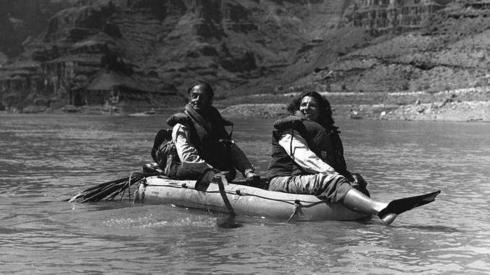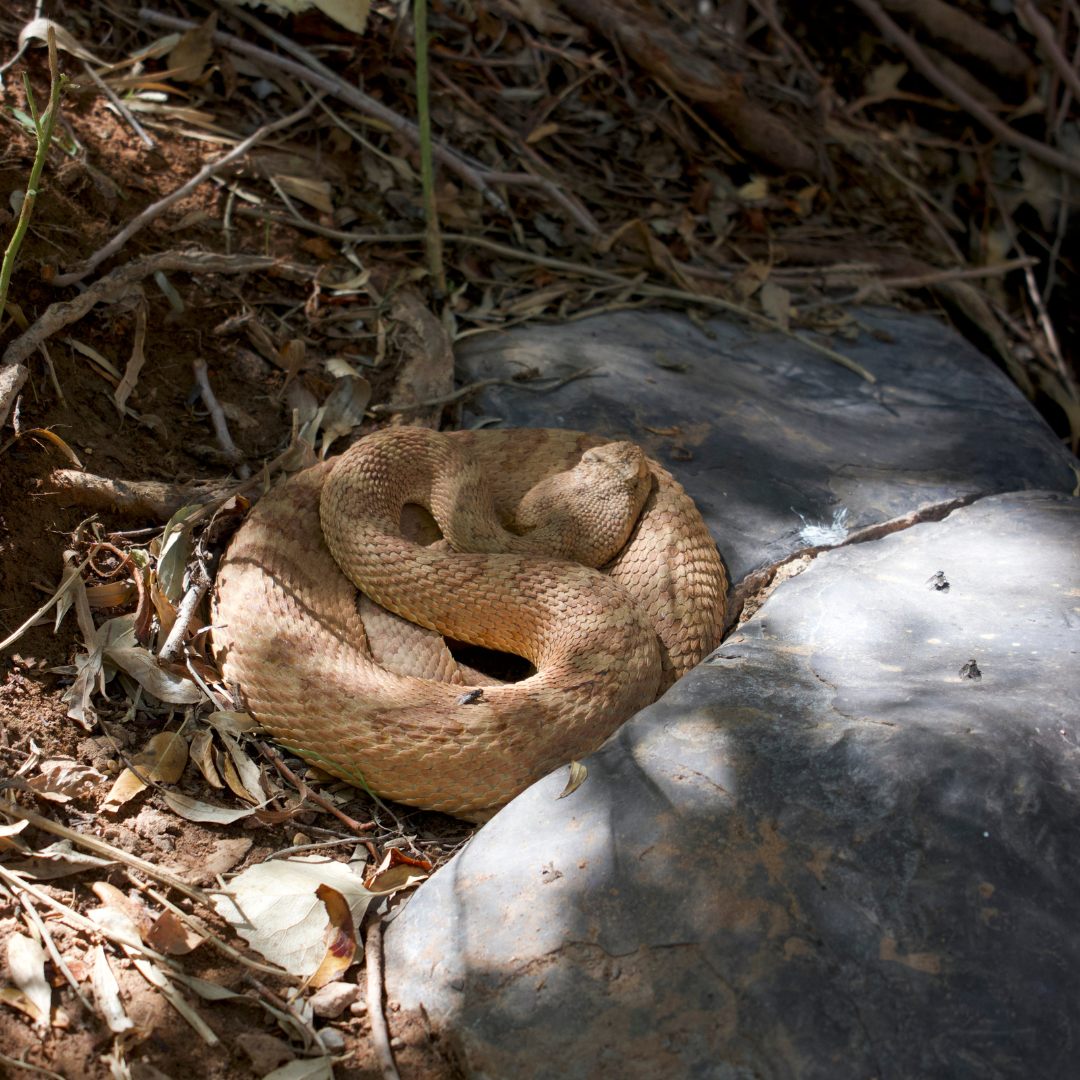Let’s take some time to appreciate some of the female influence on the Grand Canyon.
Learn about some of the incredible women in Grand Canyon that have left their mark on this amazing place.
There are so many amazing stories, but let’s start with one of our favorites, Rose Collom.
Rose E. Collom
After a field trip to the Grand Canyon in 1938, Collom received a grant to collect species in the park. Rose Collom was a self-taught botanist who eventually became an expert on Arizona plants. Although self-taught, she was the Grand Canyon National Park’s first paid botanist from 1939 until 1954. During her tenure at the Grand Canyon, Rose collected more than 800 plant specimens and collected several previously unidentified species, many of which were named after her! The herbarium at Grand Canyon National Park Museum Collections has over 800 of her specimens. Rose also collected and contributed hundreds of plant specimens to the U.S. National Herbarium and other institutions to further the study of Arizona’s flora. Her organization, the Arizona Cactus and Native Flora Society, founded the Desert Botanical Garden in 1937. Rose began working with Arizona’s plants at the age of 44 when she moved to Arizona with her husband.
They lived in a remote area in Gila County in the Mazatzal Mountains, miles from others. While her husband was away during the day, Rose found solace in her surroundings. Rose became active in introducing the use of Arizona native plants for landscaping in home gardens and along highways. She did this by replanting different species of plants she found in the higher altitude areas of her surrounding mountains, then replanting them near her home until they acclimated to the climate for several seasons, and then taking them to Phoenix to be replanted again! Eventually her careful observations and detailed descriptions of the habitats, bloom times, growing conditions, and uses of native plants were shared with scholars from many botanical institutions, including the Smithsonian.
Quotes:
- “When one lives year after year apart from the world, miles from neighbors, towns, and railways, flowers become companions and one not only enjoys them, but learns much from them. Our Arizona wildflowers are unique, beautiful and hardy, and courageous. They often grow, bloom and bear their fruit under most discouraging conditions. One watches for them and greets them as old and faithful friends, and surely from them one can derive strength and courage and faith.” – Rose Collom
Learn More:
Georgie White
Georgie White was the first woman river guide in the Grand Canyon. She became the first woman to row through the canyon and eventually started her own rafting company called Georgie’s Royal River Rats! Georgie’s adventures began after her divorce when she and her daughter got close, engaging in outdoor activities together, such as rock climbing, skiing, skating, and bicycling. Then, in 1944, her daughter, only 15 years old, was killed while bicycling by a hit-and-run driver. In response to her heartache, she took to hiking in the desert with Harry Aleson.
Harry was a friend of Georgie’s who would later become a legendary river runner in his own right Soon, Georgie started going down the Colorado River through the Grand Canyon by swimming the entire Grand Canyon twice! When we say swimming, we mean swimming. Georgie went with Harry Aleson, and their “gear” consisted of tennis shoes, a bathing suit, a light nylon shirt and jacket, and a kapok life preserver. They also each had a malt can packed and rations made up of pure sugar candy, powdered coffee, and dehydrated soup. The two entered the river in June 1945 near Diamond Peak and eventually, they reached Lake Mead, having swam roughly 60 miles of the lower Grand Canyon. Both found the trip so entertaining they completed a longer “swim” the next summer!
Georgie supposedly wanted to do it a third time, but Aleson was ready to invest in a boat. Eventually, Georgie wanted others to experience the joy river running brought. She began taking paying customers in the early 1950s and famously tied three rafts together to achieve better stability in big rapids. However, they would frequently flop onto each other and toss passengers around during rapids. She is well known for her unique approach to running her commercial rafting company. Stories are told of how she only fed her passengers canned foods. Colleagues joked that Georgie did her grocery shopping with a big magnet: walk into a store and just see what can stick. On a trip, she’d throw a bunch of unopened cans into boiling water where the labels fell off, and each person would open one up and eat whatever was inside. She always wore a leopard-print leotard that became a symbol of her legacy, and even at the age of 73, she could be seen holding her motor rig’s tiller with one hand and a beer with the other, wearing a full-length leopard-pattern leotard. Her last Grand Canyon trip took place in September 1991 as she was approaching her 80th birthday. Then in 1992, she died of cancer at age 81.
Quotes:
- “I fell in love with the river, married it, and I don’t plan no divorce” –Georgie White
Learn More:
Elzada Clover and Lois Jotter
Dr. Elzada Clover and graduate student Lois Jotter were the two first women who are documented to have successfully made it down the Colorado River. According to the National Park Service, Elzada wanted to make a trip to identify different plant species throughout the inner canyon. At the time, Elzada worked as a botanist for the University of Michigan and Lois had previously worked in Yosemite as a National Park Service naturalist. The women traveled 660 miles over 43 days, from Green River, Utah to Lake Mead, with the goal of identifying different plant species throughout the inner canyon. The crew consisted of Colorado River boatman Norman Nevills, geologist Don Harris, artist Bill Gibson, and graduate student Eugene Atkinson. Overall the trip was a success with Elzada and Lois having identified five different plant zones and over fifty species, which included four previously unidentified species. Their survey remains the only comprehensive study of plant life in the riparian ecosystem before Glen Canyon Dam altered the landscape.
Quotes:
- “This part of the West is inaccessible because of a complete lack of roads and trails. It has never been explored botanically and for that reason, everything collected will be of interest.” -Elzada Clover
- “It was just a part of the day’s work to make a flying leap for shore, to climb steep cliffs after plants, and to get photographs.” -Elzada Clover
Learn More:
- KNAU: Earth Notes: Grand Canyon’s Pioneering Cactus Collector
- National Park Service
- Williams- Grand Canyon News
Nampeyo
Nampeyo was born to the Corn Clan in the First Mesa village of Tewa. She was known as one of the finest Hopi potters, crafting beautiful pieces of pottery in the traditional Old Hopi style. Sikyatki is the name of an enormous ancient Hopi village on the east flank of First Mesa that was abandoned about 1500. Sikyatki is told in Hopi oral tradition, so Nampeyo had been familiar with its history. In 1895, a Sikyatki archaeological site near First Mesa was partially excavated by Jesse Walter Fewkes of the Smithsonian Institution. His excavations focused on the Sikyatki cemetery areas, as well as the rooms. Nampeyo visited the excavation with her husband, Lesso, and was inspired by the finely made, impeccably decorated jars and bowls of pottery that were being removed and became interested in the ancient style of Hopi pottery.
This style was common between the 14th and 16th centuries, the ancient style of pottery was harder but less prone to cracks than the style of pottery Nampeyo’s contemporaries were producing. Nampeyo would gather pottery shards and study the ancient designs painted on them by her ancestors. She would then incorporate it into her own pottery. She used ancient methods to fire and finish the pottery too, producing a smoother finished surface. By the time she was 20 years old, Nampeyo was a highly sought-after potter, famous for her Sikyatki-revival-style pottery. She traveled to Colter’s Hopi House shortly after it was constructed in 1905 and lived as an artist in residence, selling her pottery there until 1907.
Quotes:
- “When I first began to paint, I used to go to the ancient village and pick up pieces of pottery and copy the designs. That is how I learned to paint. But now, I just close my eyes and see designs and I paint them.” – Nampeyo
Learn More:
We want to recognize that the area we know as Grand Canyon has been home to indigenous communities for a very long time before it was explored by others from around the world. There are many more incredible stories and women throughout the history of the Grand Canyon that weren’t covered, so we hope this inspires you to continue learning!



